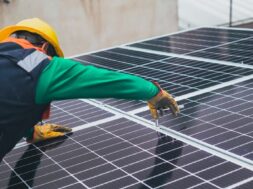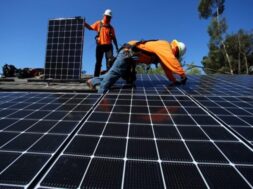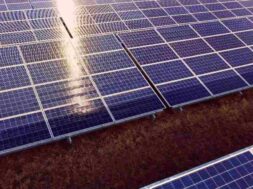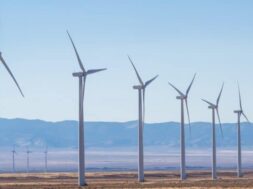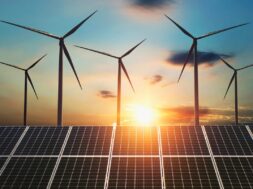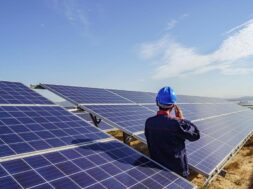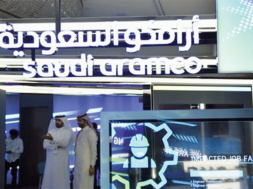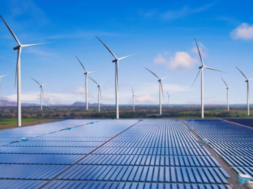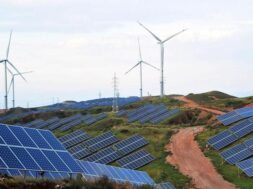
International Solar Alliance led by India, UAE, France: How it could change our world – EQ Mag
Future brightens up as India, UAE, France lead solar finance, tech, diplomacy
International Solar Alliance (ISA), founded by India, UAE, France, Australia and a number of other countries, aims to harness solar energy by mobilise over $1 trillion in investments by 2030. Alliance today counts 121 member-countries to help accelerate transition to sustainable energy via financing, tech and solar diplomacy.
Solar energy is a clean and renewable energy source. It has the potential to revolutionise the world of energy. This was given an extra push in 2015, with the creation of the International Solar Alliance (ISA).
Since then, the inter-governmental group has expanded its membership. The alliance has made significant progress towards its goal of promoting solar energy globally, via what is known as solar diplomacy, in order to mobilise up to $1 trillion in financing and promoting solar technology, to cut dependence on fossil fuels.
The alliance’s stated aim: meet rising power demands in member countries that are primarily located between the Tropic of Cancer and Tropic of Capricorn — deemed as optimum areas for generating electricity from the sun.
What has it achieved since then? Here’s what you need to know:
What is the International Solar Alliance (ISA)?
The alliance is an inter-governmental group with a single aim: lead the drive in meeting growing energy demands in member countries that are primarily located between the Tropic of Cancer and Tropic of Capricorn — deemed as optimum areas for solar energy.
It was launched during the United Nations Climate Change Conference in Paris (COP21) in 2015. The UAE is hosting COP 28 this November in Dubai. It shows how diverse nations can work together to achieve a common goal, irrespective of their differences.
Who are the founding members?
The founding members of the ISA include:
India
France
UAE
Australia
Bangladesh
Comoros
Cuba
Fiji
Ghana
Guinea
Guyana
Maldives
Mauritius
Niger
Nigeria
Peru
Seychelles
Somalia
South Sudan
Suriname
Tuvalu
Vanuatu
What is the aim of ISA?
Specifically, it aims to do the following:
Mobilise over $1 trillion in investments by 2030 to promote solar energy projects in member countries.
Address climate change and energy security.
Provide affordable, clean energy to millions of people around the world.
Facilitate the transfer of technology and knowledge.
Foster research and development of solar technology.
What initiatives have they taken so far?
One of the major initiatives of ISA is the Solar Risk Mitigation Initiative, which aims to reduce risks associated with investments in solar energy, especially in developing countries.
The initiative provides credit enhancement mechanisms, such as guarantees and insurance, to encourage private sector investment in solar energy projects.
Where is the alliance based?
The ISA is headquartered in Haryana, India. In January 2016, Narendra Modi, and the then French President François Hollande jointly laid the foundation stone of the ISA headquarters and inaugurated the interim Secretariat at the National Institute of Solar Energy (NISE) in Gwal Pahari, Gurugram, India.
What has ISA achieved?
Some of the major achievements of ISA since its formation:
#1. Membership: ISA has grown rapidly since its inception, with 88 signatory countries and 73 member countries as of 2021, to 121 this year (2023). These countries span the globe and represent a diverse range of economies and geographies.
#2. Mobilising finance: One of the key objectives of ISA is to mobilise $1 trillion in investments for solar energy by 2030. The organisation has made progress towards this goal by launching a $1 billion ISA Solar Finance Facility in 2019, which aims to provide financing for innovative and scalable solar projects in member countries.
#3. Capacity: ISA has focused on building the capacity of its member countries to develop and implement solar projects. It has launched a number of initiatives to achieve this end, including the “Scaling Solar Applications for Agricultural Use” programme, which aims to promote the use of solar energy in the agricultural sector.
#4. Solar tech: ISA has worked to promote the development and dissemination of solar technology, with a particular focus on developing countries. It has launched the ISA Innovation and Technology Diffusion Platform, which aims to identify and promote innovative solar technologies and business models.
#5. Solar diplomacy: ISA has become a key platform for promoting solar energy at the international level, and has helped to put the issue on the agenda of major global forums such as the G20 and the UN Climate Change Conference. The organization has also facilitated collaboration among member countries on solar energy issues, helping to build a community of solar energy stakeholders around the world.
What are examples of solar energy credit enhancement mechanisms?
Solar energy credit enhancement mechanisms are financial instruments designed to lower the perceived risk of investing in solar energy project.
This helps cut the cost of financing and improve access to capital. Some examples of solar energy credit enhancement mechanisms include:
#1. Power Purchase Agreements (PPAs): PPAs are long-term contracts between the solar energy project developer and the utility or electricity buyer. They guarantee a fixed price for the electricity generated by the solar energy project, which reduces the perceived risk for lenders and investors.
#2. Tax Credits: Tax credits, such as the Investment Tax Credit (ITC), can help reduce the upfront cost of solar energy projects, making them more financially attractive to investors. The ITC provides a federal tax credit of up to 26% of the total cost of a solar energy project.
#3. Loan Guarantees: Loan guarantees are a form of credit enhancement that provides lenders with a guarantee that a portion of the loan will be repaid in the event of default. The U.S. Department of Energy’s Loan Programs Office provides loan guarantees for eligible solar energy projects.
#4. Green Bonds: Green bonds are debt instruments that are specifically issued to finance environmentally friendly projects. Investors in green bonds are often willing to accept a lower rate of return, which can reduce the cost of financing for solar energy projects.
#5. Insurance: Insurance products, such as performance guarantees, can help mitigate the risk of solar energy project failure, making them more attractive to investors. Performance guarantees ensure that the solar energy project will generate a certain amount of electricity over a specified period, and if it falls short, the insurer will compensate the investor for the lost revenue.
#6. Crowdfunding: Crowdfunding platforms allow individual investors to contribute small amounts of money to solar energy projects. This can help reduce the cost of financing for solar energy projects and increase access to capital.
Top 10 solar projects in the world:
Noor Abu Dhabi Solar Plant – Located in the United Arab Emirates, this solar power plant has a capacity of 1.177 GW, making it the largest single-site solar project in the world.
Tengger Desert Solar Park – Located in China’s Inner Mongolia region, this solar power plant has a capacity of 1.547 GW, making it the largest solar project in the world in terms of capacity.
Bhadla Solar Park – Located in India’s Rajasthan state, this solar power plant has a capacity of 2.245 GW, making it the largest solar project in India.
Mohammed bin Rashid Al Maktoum Solar Park – Located in Dubai, this solar power plant has a capacity of 1.013 GW and is expected to reach a total capacity of 5 GW by 2030.
Pavagada Solar Park – Located in India’s Karnataka state, this solar power plant has a capacity of 2.050 GW, making it the second-largest solar project in India.
Benban Solar Park – Located in Egypt, this solar power plant has a capacity of 1.8 GW and is the largest solar project in Africa.
Solar Star – Located in California, USA, this solar power plant has a capacity of 579 MW and was the largest solar project in the world when it was completed in 2015.
Villanueva Solar Power Plant – Located in Mexico, this solar power plant has a capacity of 828 MW and is one of the largest solar projects in the Americas.
Kurnool Ultra Mega Solar Park – Located in India’s Andhra Pradesh state, this solar power plant has a capacity of 1 GW.
Longyangxia Dam Solar Park – Located in China’s Qinghai province, this solar power plant has a capacity of 850 MW and is one of the largest solar projects in China.
How will ISA change the world?
As ISA pushes solar energy technologies and promotes solar infrastructure in its 121 member-countries, the group has the potential to change the energy industry by driving innovation, standardisation, green job creation and boosting local power generation.
Accelerating the transition to a sustainable energy future has one key benefit: reducing greenhouse gas emission, thus helping address climate change.
However, achieving its goals will require a sustained commitment from member countries and the private sector to invest in solar energy infrastructure, research and development and to promote sustainable energy practices.
